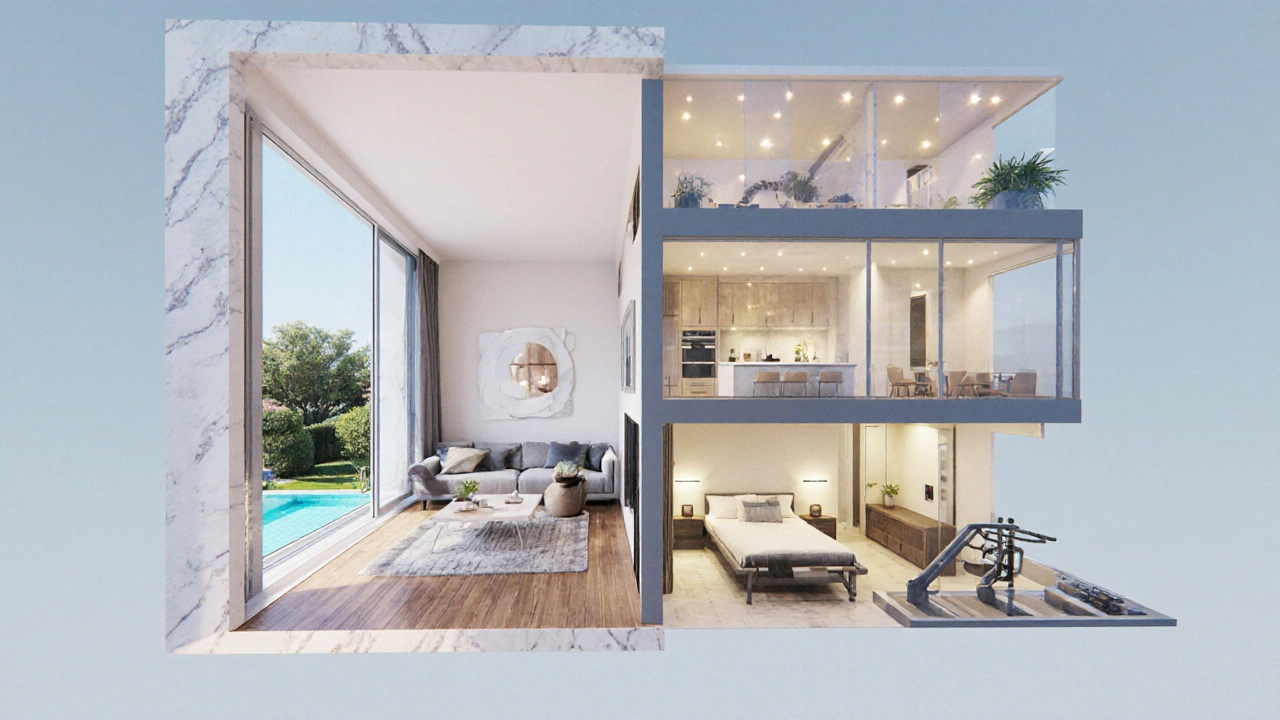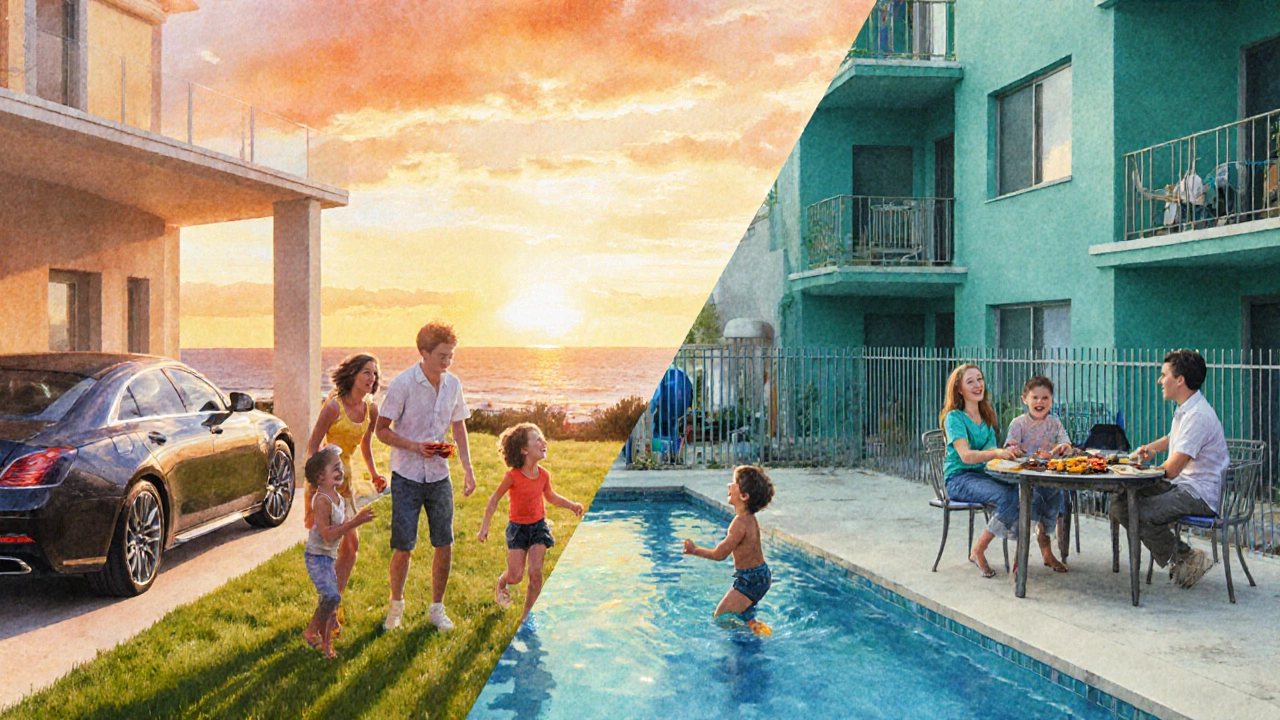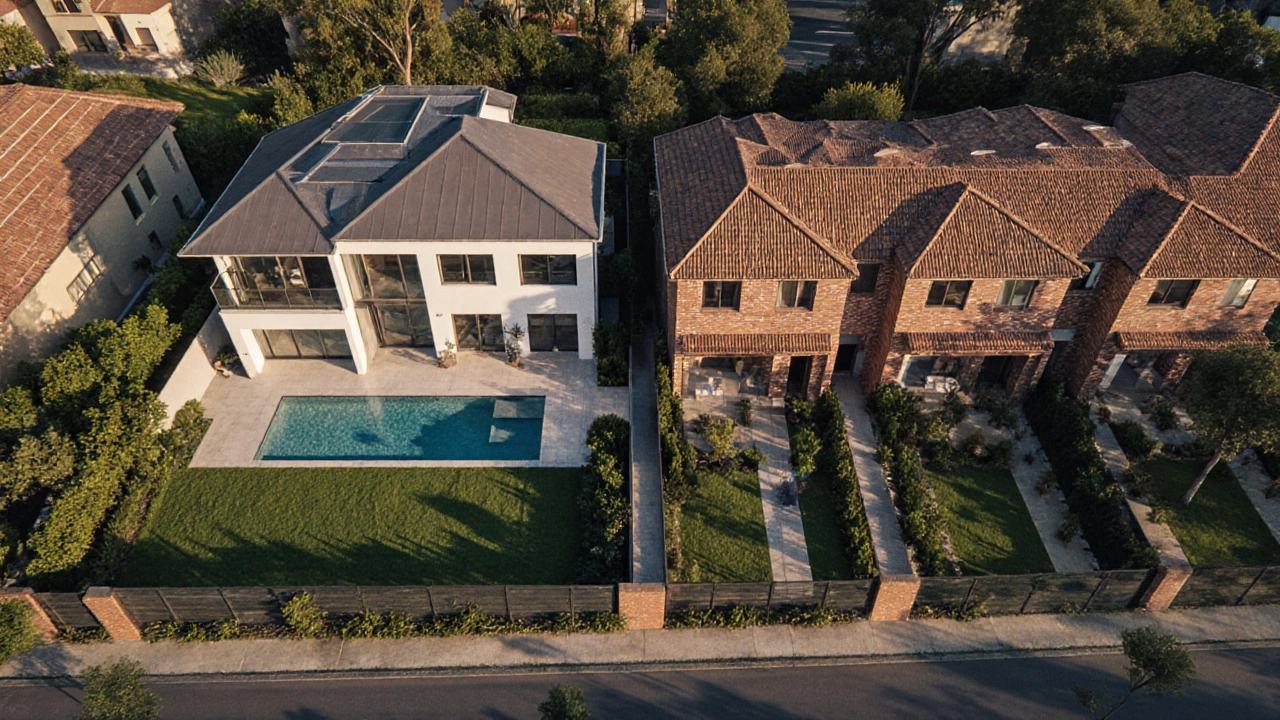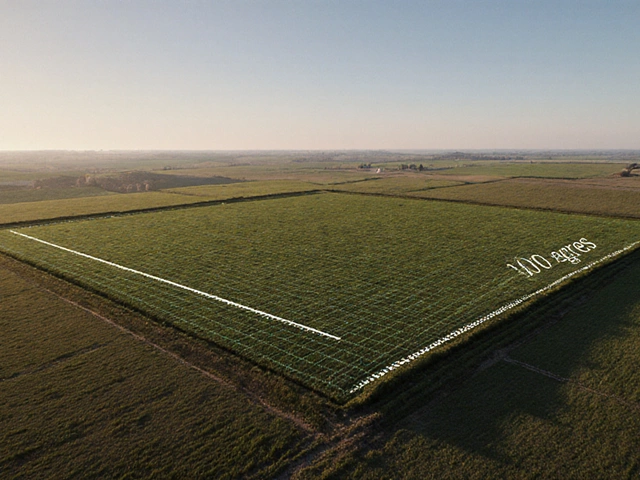Villa vs Townhouse: Decision Helper
A standalone residential building with its own land, often featuring spacious interiors, private gardens, and high-end finishes.
- Size: 2,500 – 5,000+ sq ft
- Land: Full ownership
- Price: AUD 1.2M – 5M+
- Maintenance: Owner responsible
- Privacy: High
An attached dwelling sharing walls with neighbors, usually in a complex, offering a balance between apartment convenience and house independence.
- Size: 1,200 – 2,200 sq ft
- Land: Partial ownership; shared common areas
- Price: AUD 600K – 1.3M
- Maintenance: Shared by owners' corporation
- Privacy: Medium
Answer the following questions to help determine which option suits your lifestyle and budget better:
Recommended Option
Why this choice?
Trying to decide between a villa and a townhouse can feel like comparing apples and oranges-both are homes, but they serve very different lifestyles and budgets. Below we break down the core distinctions so you can see which fits your needs.
What Is a Villa?
When most people hear villa is a detached, often luxury, residential building that sits on its own parcel of land and typically offers spacious interiors, private gardens, and a higher degree of architectural elegance, they picture a standalone house with a pool, a sizable yard, and plenty of privacy. In Australia, villas are common in upscale suburbs and coastal enclaves, where land values support larger footprints.
What Is a Townhouse?
A townhouse is a multi‑level, attached dwelling that shares one or two walls with neighboring units but usually includes its own entrance, a small yard or balcony, and a garage. Townhouses form part of a row or a complex, offering a middle ground between an apartment’s convenience and a detached house’s independence.
Size and Layout: Space Matters
Villas typically range from 2,500 to 5,000sqft (or more), often spread over one or two stories with open‑plan living areas, expansive bedrooms, and multiple bathrooms. Because the building sits on its own lot, you also get extra square footage for gardens, pools, or carriage houses.
Townhouses, on the other hand, average 1,200 to 2,200sqft. They make efficient use of vertical space-usually two to three stories-so the footprint is smaller, but you still enjoy multiple floors separating private and public zones.

Land Ownership and Zoning
Ownership of a detached house (the category a villa falls under) means you own both the structure and the land it sits on. This grants you full control over extensions, landscaping, and even the possibility of subdividing the lot (subject to local zoning regulations).
A townhouse is usually part of a semi‑detached or attached development. While you own the interior and a small plot (often a courtyard or a front yard), the land and common areas are managed by a body corporate or owners’ corporation. This means you’ll pay property tax and levies for shared amenities like gardens, swimming pools, and security.
Price and Maintenance Costs
Because a villa includes land, larger living spaces, and often premium finishes, the price tag in Melbourne can start around AUD1.2million and climb well beyond AUD5million for waterfront models. Ongoing costs include higher council rates, garden upkeep, and insurance for a larger structure.
Townhouses are generally more affordable, with entry‑level pricing from AUD600,000 to AUD1.3million in Melbourne’s inner and middle suburbs. Maintenance is partly covered by the owners’ corporation, which handles exterior painting, roof repairs, and shared facilities. However, you’ll still have personal maintenance for interiors and any private outdoor space.
Lifestyle and Amenities
Villas appeal to buyers who value privacy, space for entertaining, and the freedom to customize every aspect of the property. Features often include: private swimming pools, landscaped gardens, home gyms, and even separate guest houses.
Townhouses attract those who want a low‑maintenance lifestyle while retaining a sense of ownership. Common amenities in townhouse complexes include: communal gyms, BBQ courts, children’s playgrounds, and security gates. Because the external upkeep is shared, you can spend more time on work or hobbies rather than lawn care.

Choosing Between a Villa and a Townhouse
Ask yourself these quick questions:
- Do you need a large yard for kids, pets, or a hobby garden? Villa wins.
- Is a lower maintenance burden a priority? Townhouse takes the lead.
- Do you plan to host large gatherings regularly? Villa’s spacious indoor/outdoor flow is ideal.
- Are you comfortable with an owners’ corporation and its fees? Townhouse requires that.
- Is your budget flexible enough for land purchase and higher council rates? If not, the townhouse is the safer bet.
Both options can be great investments in Melbourne’s strong real‑estate market, but the right choice hinges on how you balance space, cost, and lifestyle.
Side‑by‑Side Comparison
| Attribute | Villa | Townhouse |
|---|---|---|
| Typical size (sqft) | 2,500-5,000+ | 1,200-2,200 |
| Land ownership | Full lot ownership | Partial lot; common areas shared |
| Price range (Melbourne 2025) | AUD1.2M-5M+ | AUD600K-1.3M |
| Maintenance | Owner responsible for all | Owners’ corporation handles exteriors |
| Privacy | High - standalone building | Medium - shares walls |
| Typical amenities | Private pool, garden, guest house | Shared gym, pool, BBQ area |
| Council rates | Higher - based on land value | Lower - based on building value |
Frequently Asked Questions
Can I convert a townhouse into a villa?
No. A townhouse’s structural walls are typically attached to neighbors, and zoning laws in most Australian councils prevent you from expanding the footprint beyond the allocated lot. Converting would require a complete redevelopment, which is usually not feasible.
Do villas have higher resale value than townhouses?
Generally, yes. Because villas include land, they tend to appreciate faster, especially in high‑demand suburbs. However, market conditions, location, and the quality of the build can narrow the gap.
What are the typical ownership costs for a villa in Melbourne?
Beyond the purchase price, owners pay council rates (often 1.5‑2% of land value), insurance for a larger structure, garden maintenance, and possibly heritage fees if the villa is in a historic precinct.
Are townhouses suitable for families with children?
Absolutely. Many townhouse complexes include playgrounds, secure gates, and nearby parks. The smaller lot size can actually be safer for younger kids, and the shared maintenance frees up family time.
How do I know which option fits my financing situation?
Talk to a mortgage broker about loan‑to‑value ratios. Villas usually require a larger deposit (often 20‑30% of purchase price) due to higher loan amounts, while townhouses can be financed with a 10‑15% deposit in many cases.






